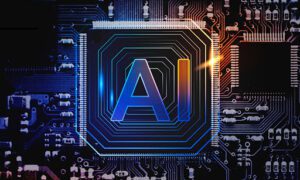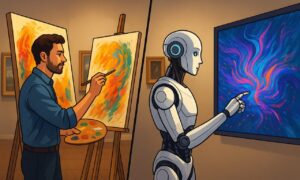Introduction: Engineering education is at a critical juncture, with rapidly evolving demands from both the workforce and society. As the global need for engineers grows, so does the challenge to ensure that educational systems are prepared to meet this demand while addressing the diverse needs of students. Aishwary Pawar, a master’s student currently conducting research in engineering education, offers valuable insights into the current landscape of engineering enrollment, retention, and emerging trends. His research, which combines both qualitative and quantitative data, sheds light on the factors influencing student success and offers practical solutions to enhance the engineering education experience.
- What’s been happening with enrollment in engineering programs recently? Are there any specific trends or challenges you’re noticing?
Answer: Enrollment trends in engineering education have been shaped by a variety of factors, and in 2019, we are witnessing a surge in interest in specific disciplines like computer science, software engineering, and electrical engineering. These fields align with the growing digital transformation across industries and the increased demand for tech professionals. However, other traditional fields like civil engineering, mechanical engineering, and aerospace are experiencing slower enrollment growth, despite being critical to infrastructure development and innovation.
Through my research, I’ve identified a significant regional aspect in enrollment trends. By examining Zip Code-level U.S. census data alongside student demographic data, I’ve found that some geographical regions, which should theoretically have strong recruitment potential based on their socioeconomic and educational characteristics, are underrepresented in engineering programs. This indicates that, while the potential for growth is present in these areas, institutions may not be tapping into these opportunities effectively. A deeper look into these regions’ high school resources, community support, and even perceptions of engineering could provide a better understanding of why students from these areas are not enrolling in engineering programs at the rates expected.
Moreover, the increasing importance of outreach programs and targeted recruitment efforts is evident, especially for underrepresented groups in engineering. Universities must work on creating a more inclusive environment by engaging with students from diverse backgrounds early on and providing them with the necessary resources to navigate the application process and succeed once enrolled.
- Retention is always a big topic in education. How do you think engineering programs are handling student retention? Are there things they could do better?
Answer: Retention in engineering programs is a complex challenge that involves both academic and non-academic factors. As engineering programs grow in size and become more competitive, students often face overwhelming pressure to perform at a high level, which can lead to stress, burnout, and ultimately, attrition. One of the key findings of my research revolves around students’ perceptions of their academic preparedness upon entering their engineering program. Many students enter with a sense of uncertainty, particularly those from non-STEM backgrounds or schools with fewer resources. These students often underestimate the rigor of engineering coursework, which leads to self-doubt and decreased persistence.
To combat this, many institutions are beginning to recognize the importance of early intervention strategies. Programs like summer bridge programs, which aim to prepare students academically and emotionally for the challenges ahead, have shown promise. Additionally, universities are placing greater emphasis on academic advising and mentorship programs, where upperclassmen and faculty advisors provide guidance not just on academic matters, but on career planning, time management, and stress reduction. These programs not only help students feel more connected to the university but also foster a sense of belonging and community, which is crucial for retention.
Furthermore, I have found that financial aid plays a crucial role in retention. Students who are financially stressed are more likely to drop out. Therefore, engineering programs that offer scholarships, fellowships, and paid internships can ease financial burdens and allow students to focus on their studies. Institutions should also provide flexible options, such as part-time enrollment or online courses, to accommodate students who need to balance work, family, and education.
- Are there any new trends in engineering education that you’re seeing? How are programs evolving to meet the needs of students and industries?
Answer: Engineering education is undergoing a transformation driven by advancements in technology, industry demands, and evolving pedagogical approaches. One of the most significant trends I’ve observed is the integration of interdisciplinary learning into engineering curricula. As industries increasingly demand engineers who can think outside the box and collaborate across disciplines, engineering programs are incorporating courses from fields like business, design, and the social sciences. This approach equips students with the diverse skill set needed to solve complex, multifaceted problems, from designing user-friendly technology to navigating the ethical challenges of emerging technologies.
Another important trend is the growing emphasis on experiential learning. While traditional lectures and textbooks still play a significant role, hands-on experiences such as internships, co-op programs, and industry-sponsored research projects are becoming integral to the curriculum. In my research, I found that students who engage in these opportunities not only develop technical skills but also gain essential soft skills like communication, teamwork, and project management. These real-world experiences are invaluable for preparing students for the workforce and increasing their employability upon graduation.
Additionally, the rise of digital learning platforms and online education is reshaping engineering education. While the traditional classroom model remains dominant, universities are increasingly offering hybrid courses that combine in-person learning with online modules. This flexibility allows students to access materials at their own pace and tailor their learning to fit their schedules. However, the challenge is maintaining the quality of hands-on learning experiences in this hybrid model, as engineering requires significant practical application of knowledge.
- What do you think are the biggest challenges that engineering programs are facing today when it comes to meeting students’ needs?
Answer: One of the key challenges engineering programs face in meeting the needs of students is the disparity between the demand for engineers and the limited resources available to support them. While engineering enrollments are growing, institutions often struggle with class sizes, lab availability, and faculty-to-student ratios. As a result, students may feel lost in large lecture halls, with limited opportunities for individualized attention from professors. This can exacerbate feelings of isolation and lead to higher dropout rates, especially for students from underrepresented groups.
Another challenge is the evolving nature of the workforce. As industries advance, so do the skills required of engineers. Engineering programs must constantly adapt to ensure that they are preparing students for the emerging job market. This means not only updating curricula to reflect the latest technological developments but also focusing on teaching students the skills they will need to succeed in a fast-changing work environment, such as critical thinking, problem-solving, and adaptability.
Lastly, the mismatch between the skills taught in engineering programs and those required by employers continues to be a challenge. My research points to a need for stronger industry-academia collaboration to ensure that students are receiving the right mix of theoretical knowledge and practical skills. Partnerships with industry leaders can help universities better understand the specific skills and competencies employers are looking for and design programs that bridge this gap.
-
Data analytics is becoming a big part of many fields. How do you see data analytics improving engineering education, and what kind of insights can it provide to help students succeed?
Answer: Data analytics plays a crucial role in improving engineering education by providing insights into student behavior, performance, and engagement. Through my research, I’ve used demographic and enrollment data to identify patterns that can inform recruitment strategies and retention efforts. For instance, analyzing Zip Code-level data allows universities to pinpoint underrepresented regions that may hold potential for recruiting more students into engineering programs.
Moreover, data analytics enables universities to identify at-risk students early on. By tracking metrics like grades, attendance, and engagement, institutions can proactively intervene when students are struggling. Predictive analytics can be used to forecast which students are most likely to drop out and provide them with the necessary support before they make the decision to leave.
On a broader scale, data analytics helps universities continuously evaluate and improve their curricula. By tracking student performance across courses and evaluating learning outcomes, institutions can identify areas where students are consistently struggling and make adjustments to course content or teaching methods.
- In your opinion, how important is it for engineering programs to collaborate with industry? How do you see that relationship influencing the future of engineering education?
Answer: Industry collaboration is essential for ensuring that engineering education remains relevant to the evolving needs of the workforce. In 2019, many engineering programs are strengthening their ties with industry partners to ensure that the curriculum aligns with current and future job market demands. Industry collaboration offers a wealth of opportunities for students, from internships and co-op programs to industry-sponsored research projects. These experiences provide students with a deeper understanding of real-world engineering challenges and help them build the practical skills that employers seek.
Furthermore, industry partners play a crucial role in shaping curricula to ensure that students are learning the skills needed to succeed in the workplace. This collaboration also ensures that the gap between what is taught in the classroom and what is expected in the field continues to shrink, making the transition from academia to industry smoother for graduates.
Conclusion: Engineering education is at a crossroads, and the decisions made today will shape the future of the field. By embracing data-driven strategies, fostering interdisciplinary learning, and strengthening industry partnerships, engineering programs can better prepare students for the challenges and opportunities of tomorrow. As my research demonstrates, understanding the factors influencing student success—such as academic preparedness, community characteristics, and targeted interventions—can help institutions create more inclusive, effective, and future-ready engineering programs. The future of engineering education is bright, but only if institutions are willing to adapt and innovate to meet the evolving needs of students and the workforce.





























